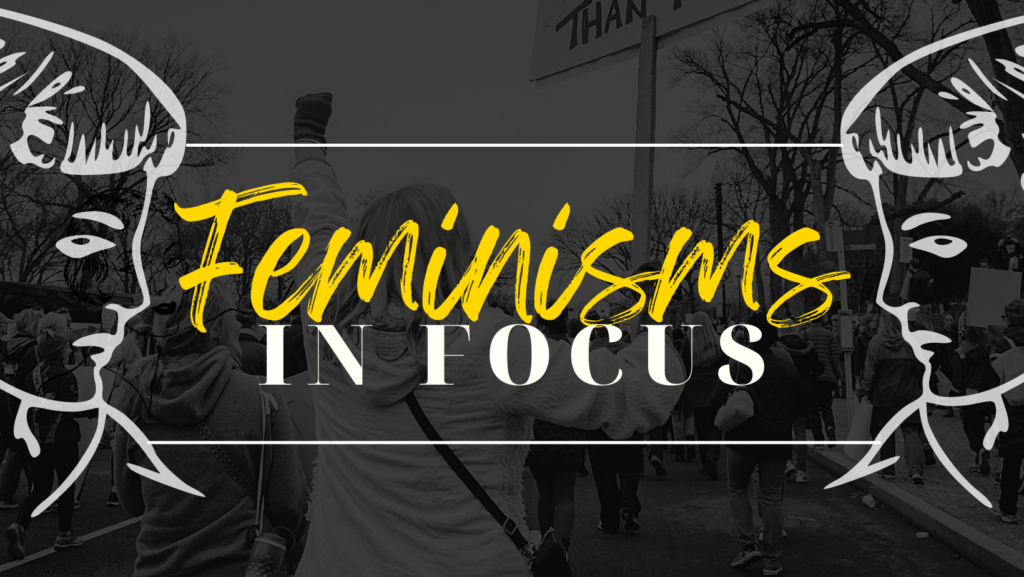Interview by Yanni Villarosa

As you explain in your book Care Activism (University of Illinois Press 2023), migrant
workers’ “communities of care” are central to their activism. How do those networks of
care begin? Do they look and work the same today as they did between, for example,
1992 and 2014, given changes to the Live-In Caregiver Program in that period that
opened up, however inadequately, new paths to permanent residency?
The notion of communities of care is from sociologist Valerie Francisco-Menchavez’s book
The Labor of Care. She noticed that communities of care spring up organically among
communities of domestic workers, primarily Filipino domestic workers in New York. The
framework she presented allowed me to see how communities of care exist everywhere,
including within the activist spaces that I shadowed in my book Care Activism. So I think one
good way to think about communities of care is to see them as communities of dissident
friends.
"One good way to think about communities of care is to see them as communities of dissident friends."
Ethel Tungohan
In Care Activism, I talk about dissident friendship as one of the motivating factors for
migrant care worker activism, where “dissident friendships” are spaces where care workers
can bear witness to each other’s struggles. A lot of the care workers I came to know in the
course of my research celebrated each other’s accomplishments and their children’s
accomplishments from “back home”, as well as provided each other with spaces of support.
So how do these dissident friendships begin? Organically—I mean, how does one
become friends with other people? They might begin with an outreach session. They might
begin with people sitting next to each other at the park and striking up a conversation,
because both are watching the children they are caring for. There’s not one answer to that.
In my book, I sought to highlight how care activism is not only about policy
improvements that the activists were able to accomplish, but also about the support that these
communities of care provided for their members.
Regarding changes over the course of the decades, the main one would be the advent
of information technology. Today, a lot of care workers organise through apps like WhatsApp
and Signal. These virtual communities of care are important alongside in-person ones:
information technologies have shifted the nature of friendship, including the nature of
dissident friendships.
Your book also compares and contrasts different kinds of migrant worker advocacy—can you tell us about the more conservative and about the more social justice-oriented activism among care workers?
I made it a point to feature organisations with care workers in leadership roles, so when we
talk about organisations that are more conservative or more progressive, we should recognize
that those ideologies come from the workers themselves. There is space for different types of
activism.

is a Canada Research Chair in Canadian Migration Policy, Impacts and
Activism and an Associate Professor of Politics at York University in Toronto, Canada.
Her latest book, Care Activism: Migrant Domestic Workers, Movement Building, and
Communities of Care, won the National Women’s Studies Association First Book Prize.
It can be purchased via the University of Illinois Press:
https://www.press.uillinois.edu/books/?id=p087400.
Her research looks
at social movements,
immigration policy, social and public policy, and Canadian and comparative politics.
More conservative organisations are those that see their role as providing care workers with a space to be “grateful” to Canada. But even as they adhere to norms ofgratitude, they are involved in policy advocacy. They just do it in a different way, avoiding, for instance, marches and rallies.
As for more progressive organisations, there are different types. Some of these organisations have transnational ties, such as to the Migrante International network. Some are more closely tied to the nation state, operating within Canada. Among these progressive organisations, a similarity is that they share critiques of how labour migration programs are bound up with neoliberal capitalist structures. So they offer a structural critique alongside policy advocacy.
There are other organisations that purport to represent care workers. This includes oganisations associated with churches, whether Catholic churches or Evangelical churches, or even care worker organisations that are tied to employment agencies. I omitted those organisations from my research for the book because they are not led by care workers.
Your book describes care activism as being “as much about policy and structural changes as it is about validating … migrant care workers’ own needs and desires”. Would you say there is interplay between these two? Does validation in migrant care workers’ everyday lives help change policy? And do structural changes affect migrant care workers’ relationships with each other?
In centring what Indigenous feminist Eve Tuck calls a desire-based framework, as opposed to a damage-centric framework, my goal was to highlight the humanity of migrant care workers. A lot of research about migrant activism pays attention to the policy interventions that activists make and to their structural critiques. Of course, this is important, and I do consider those angles in my book. But such an approach doesn’t really capture the fullness of migrant domestic workers’ advocacy and the motivations they have in being part of those organisations.
In centring desires, we can look at some of the contradictions built into migrant care worker advocacy. We can see how migrant care workers may critique the Live-In Caregiver Program (“LCP”) while also seeking ways to recommend family members in the Philippines who want to be part of the LCP; they may suggest that their employers hire their relatives after they’re done with the program. Looking at these contradictions and at the desires fueling
advocacy is important because all of us are complex. All of us have competing desires; not all of our desires square easily with our structural critiques. Paying attention to such contradictions is a way of centring migrant domestic workers’ humanity.
Is there an interplay between policy changes and the activists’ personal goals? Perhaps, but what I aimed to highlight was that we can’t resort to damage-centric frameworks when understanding migrant care workers’ experiences; we have to look at the fullness of their experiences and the desires at the heart of those.
“We have to look at the fullness of care activists’ experiences … and the fullness of their humanity
Ethel Tungohan
Understanding these desires helps contextualise Care Activism’s final chapter, where I analyse everyday forms of care activism, often omitted in academic studies. I describe beauty pageants, artistic creations, and even humour. What I showed is that by making art and participating in beauty pageants, migrant domestic workers reject a perpetual association with domestic work. Taking part in a beauty pageant on a Sunday, building community that way
instead of through their jobs, and feeling glamorous about it expands notions of what migrant domestic work looks like. And that expansion is rooted in centring migrant domestic workers’ desires and the fullness of their humanity.
Care Activism touches on the deeply felt impact of temporary status; even beyond this book, you have researched the topic of precariousness within migrant life. However, care activism is particularly characterised by the methods of personal resistance and supportive solidarity. How do communities of care and specific care activism movements maintain the stability and momentum required for those methods, given the instability ingrained into living in Canada as non-citizens?
In the book, I highlighted the intergenerational facet of care activism as well as the temporal facet, the consideration of care activism within a specific moment in time. Many care activists that I spoke to know that they are indebted to previous generations of care activists, the heroes of the movement. These heroes include the seven Jamaican mothers whose campaign propelled the issue of migrant domestic work into public consciousness in the 1970s, activists like Coco Diaz, Fely Velasin, and others—many, many others. Care workers are aware of these histories and seek to be active to continue this legacy. At the same time they want to be active because they recognize that future generations of migrant care workers are coming and may arrive in even more vulnerable, more precarious circumstances.
This intergenerational aspect shows that care activism isn’t just about creating policy change today. It’s about recognizing that activists are part of a broader community, transcending time and space.
Naturally, there are some care activists who, after they receive permanent residency, drop out of the movement. Some don’t have time because after they become permanent residents, their children come and their husbands or partners come, and they become ensnared in the daily reality of living, where there are settlement and adjustment concerns. Observers might say, “Well, that shows that there’s not a lot of continuity in activism,” but what’s interesting is that even care workers who are less active in day-to-day campaigns can be called on for larger campaigns when needed.
Still, it’s definitely harder for people who were part of the movement to keep being part of the movement—they have other pressures, they know that there are younger activists coming through, and they get a little divorced from the intimate details of the vulnerability care workers face when they’re no longer one. Yet I have a more optimistic spin to it. This shows the intentionality behind care activism: people stepping aside ensures that new
generations of leaders are stepping forward, and that, I think, is a good thing.
Is there anything else you think people reading the published interview should know that we haven’t talked about yet?
One dynamic that I would highlight is that care worker activism—“care activism”, as I term it in the book—has changed. The COVID-19 pandemic and the time since the pandemic ended have highlighted how a lot of care worker activism is now built on creating solidarities with
other movements. We witnessed this during the pandemic, when there was a call for racial reckoning around Black Lives Matter and Indigenous movements.
I see the solidarities deliberately formed by these movements—solidarities between care activists and movements like Black Lives Matter and Indigenous liberation struggles—as the future of care activism, where you see that we have a shared fate. To move forward, we need to see the interconnectedness of our struggles. I call this critical hope.
"I call this critical hope."
Ethel Tungohan
That’s what I would like readers to remember: When we look at care activism, it’s not about care workers representing their interests alone. Increasingly, we’re seeing connections being built with other movements. For me, that is a source of hope for the future of care activism.
Yanni Villarosa is a Linguistics & Language Studies student at York University’s Glendon campus.
